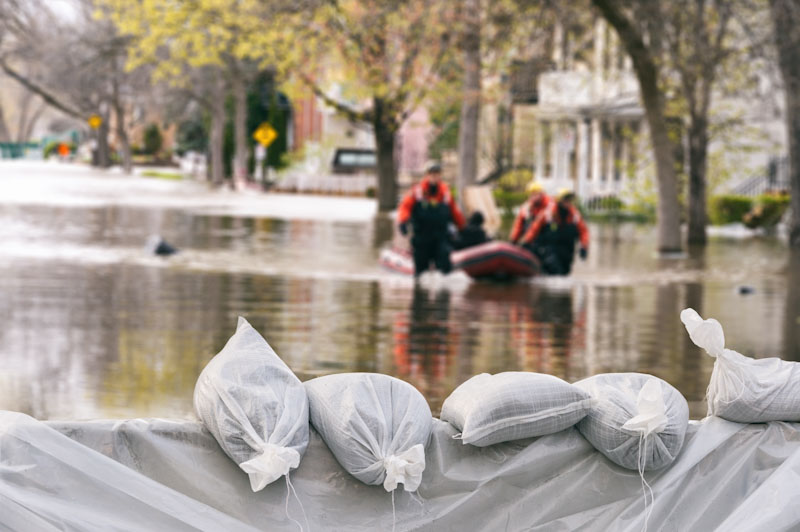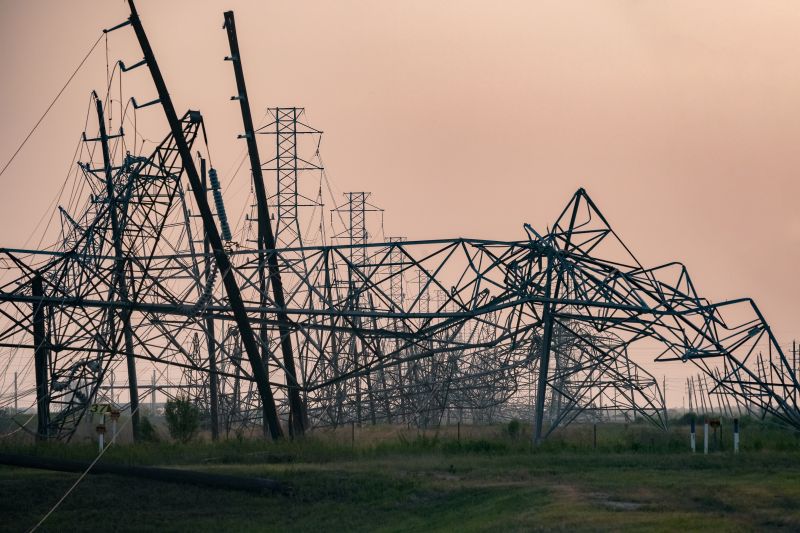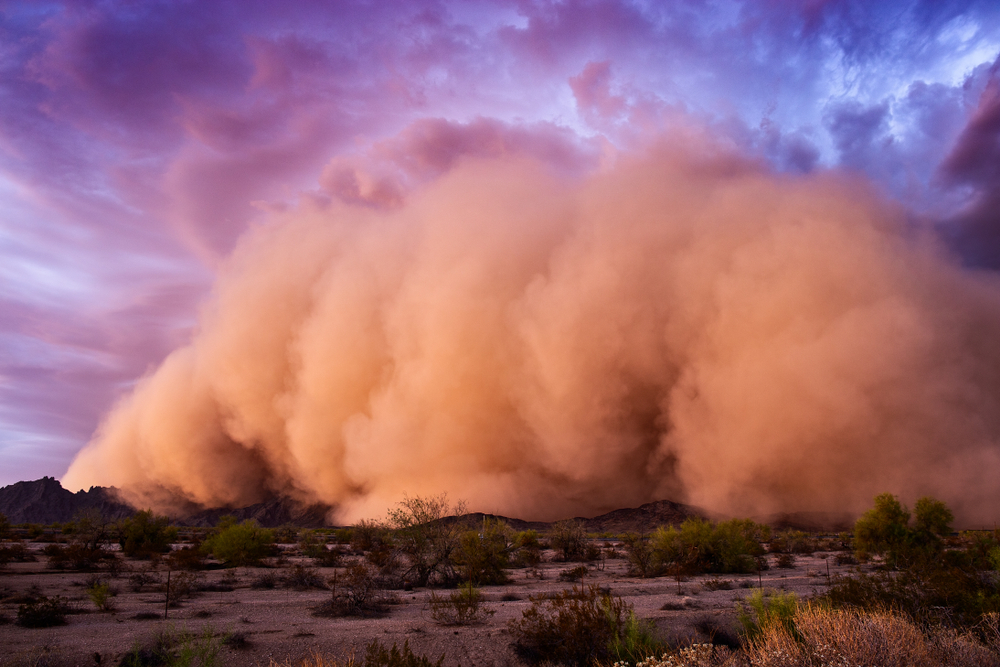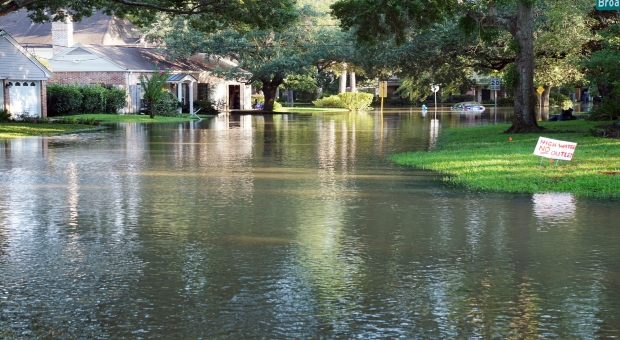Back in 2017, Hurricane Harvey stalled over Southeast Houston, causing widespread flooding. At the time, I lived a few hundred miles away, well outside the danger zone. It could have been different, though, as just a couple of days earlier it looked like Harvey was going to come pay us a visit. Fortunately for us, it decided to turn north and visit Houston instead. It apparently liked the cultural attractions that the city had to offer.
Like everyone else, I was surprised when the hurricane stalled over Houston and amazed by the massive amount of flooding. While flooding is certainly not something new and Harvey wasn’t the biggest flood the nation has ever seen, it caused $125 billion in damage, only being outdone by Hurricane Katrina. It was much more personal to me, because of friends and family living in the affected area.
More than that, the realization that the storm could have hit us, rather than the Houston area, made me think about the potential for flooding. Much of Texas is very flat, and the part I was living in fell into that category. Flooding can be especially dangerous in flatlands, because the water doesn’t drain off quickly. That’s part of what happened in Houston. The water didn’t have anywhere to go, so just piled up, flooding homes, streets and businesses.
Of the various thoughts that occurred to me, as I reviewed that disaster and how people dealt with it (my standard after-action review), it seemed to me that the flood was one of the few disasters that being a prepper would not have been much of an advantage in most situations. If you have to abandon your home, leaving all your preps behind, they aren’t going to do you much good.
Of course, hurricanes aren’t the only thing that can bring flooding. I know an area in North Dakota that floods every spring, because the local river dips south, then turns back north again. So, the water starts flowing, but is impeded by the ice still in the river. Doing what water does, it flows over the banks, flooding homes and towns.
When we’re talking about flooding, there are a number of things that have to be looked into; regardless of where we live.
Are You in a Flood Zone?
The first thing any of us need to consider is whether we are in a flood zone or not. The US Geological Survey (USGS) has mapped out areas, all across the country, which are in what are known as “100-year flood zones.” What this means is that there is a 100% probability that those areas will flood sometime within a 100-year period. Each year, there’s a 1% chance, adding up to 100% through the 100-year period. Of course, that doesn’t mean those areas are limited to only one flood in those 100 years, just that they will definitely have at least one.
That’s not to say that other areas are free from the risk of flood. There are a wide number of other things that can cause flooding, which don’t figure into the USGS’s maps. Flash flooding from storms far upstream, bursting dams, and of course hurricanes can all cause flooding, as well as a host of other things.
Natural Flood Drainage
As I’ve already mentioned, one of the big problems in Houston was a severe lack of natural drainage. On top of that, there was very little green area, giving water a place to soak into the ground. With very little slope to the ground, the rain could not flow downhill, clearing the area.
Something similar happened when Hurricane Beulah hit the Rio Grande Valley of Texas, back in 1967. Once again, the ground was very flat, allowing for limited drainage. More than 24 inches of rain fell in some areas, with isolated pockets topping out at over 30 inches. The ground was already saturated by recent rains, causing a similar problem as they had in Houston, where the rain couldn’t soak into the ground.
Wherever you live, you need to be concerned about natural drainage. When there is a heavy rain (3 to 5 inches of rainfall) do you get puddles? Does your yard flood? Is there flooding in the intersections near your home? Or are you fortunate enough to have good natural drainage, allowing that water to flow downstream, clearing your area.
Take a good look at topographical maps of the area where you live. How does the altitude of your home compare to the neighborhood around you, extending out several blocks? Are there other areas which will flood before yours? Is there a chance that you’ll be left on a relatively dry island, while the area around you floods? That’s the situation I was in, as our block our home was built on was about five feet higher than anything else around
Typically, there is little any of us can do about poor natural drainage, unless you have a large parcel of land and the ability to dig a drainage pond.
Can You Bug In Anyway?
Whether or not you can bug in will depend a lot on whether or not your home is likely to flood and how badly your home will flood if it does. I know a lot of people who live in Villahermosa, Mexico, who have ridden out 8 to 10 foot flooding by taking their furniture and everything else they could upstairs and waiting out the flood on the second floor. This is one case in which having a two-story home can be an advantage.
Of course, those houses in Mexico were made of cement block, which makes the home much more resilient to flooding. Rather than having to remove carpeting, drywall, trim and insulation, so that they could rebuild after the flood, those people just had to clean out the mud real well, allow everything to dry, then repaint their walls.
Creating Flood Resiliency
Some people manage to bug in during a flood, even without a concrete block home. I’ve seen photos of homes where the family built a barrier around their homes, either of sandbags or the newer water dams, allowing them to stay home and ride out the flood. Their homes looked like an island in the waters, even though it was an island where the ground level was below the level of the water.
This is a lot of work and a lot of expense; but it much better than losing your home to the flood. It requires building the sandbag wall or water dam at least a few feet out, away from the walls of the home. You need enough space to patrol around the home, looking for leaks. You also need a couple of good pumps, to throw any water that leaks through back over your sandbag wall. Of course, whatever barrier you build has to be higher than the level of the water, or it doesn’t do you any good.
One man in Rosharon, Texas used 400 feet of water dam, that he purchased for $8,300 to save his home from 27 inches of floodwater. While that was a considerable expense, it was small, in comparison to what it would have cost him to rebuild and repair his home, had it flooded.
Self-Rescue
The next thing that we should all consider is our ability to execute a self-rescue, should flooding start. Many people in Houston were trapped in their homes, by the time they realized that Their neighborhoods were flooding. Their vehicles couldn’t make it through the rising water and they didn’t own boats. Instead, they had to wait for the Cajun Navy to rescue them in their swamp boats. This meant waiting uncomfortably while the waters rose and being limited to one suitcase per person.
A good, high, four-wheel-drive vehicle can be used for the purpose of self-rescue, if you bug out soon enough. Adding a snorkel and waterproofing the engine makes it possible to bug out in that vehicle with water levels even higher. But there is always a point at which land vehicles aren’t going to be able to do the job. You will need to rely on boats to escape.
That doesn’t necessarily mean you have to spend a lot of money on a boat though. I solved the problem of not having a means to execute a self-rescue by buying an inflatable 4-person boat. While that wouldn’t necessarily be the most luxurious means of travel, it would allow my wife and I to get out with our bug out bags, a couple of suitcases and the dogs.
Don’t Forget a Cache
One thing that flooding shows us is that no matter how well we are prepared to bug in, there can always be situations where we need to bug out. Floods like these are an ideal example of why we all need to have at least one good supply cache, far enough away from our home, so that it won’t be destroyed by the flood. That way, even if we are forced to leave most of our possessions behind, waiting for the flood waters to go back down, we will at least have food, clothing and other survival necessities available, to take care of our family.










radar | April 17, 2024
|
Excellent topic. You are so right about some type of flotation device; Fool-me, I have thought about it long and hard, but haven’t done a thing about it yet other than carry some life-preservers.
radar | April 17, 2024
|
Excellent topic. You are so right about some type of flotation device; Fool-me, I have thought about it long and hard, but haven’t done a thing about it yet other than carry sohttps://www.survivopedia.com/category/communication/me life-preservers.